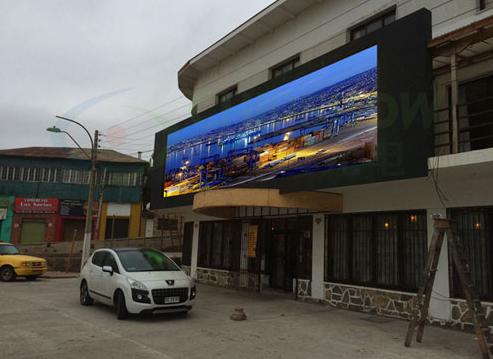Today we tend to take LED video displays for granted. Indeed, they became common features in our towns and we mostly pay attention to their outward quality parameters. we believe time has come to spell out major technical principles of modern LED video displays, those principles that ultimately ensure what millions of people see on screens every day.
Modern LED video display is a complex system with enormous number of components. The image quality and operational parameters depend on the quality of each of those components as well as on the functionality of screen control system.
Typical block diagram of a LED video display

The following LED video display characteristics are essential from the point of view of image quality:
LED video display resolution (so called spatial resolution), in LED video displays it is closely related to distance between pixels or pitch size;
Maximum brightness (measured in Nits);
Dynamic brightness range understood as the number of brightness levels that the screen is capable to support (sometimes it is also called radiometric or energy resolution);
Frame rate measures how often a video source can feed an entire frame of new data to a display, the frequency of frames changing per second (fps) (sometimes referred to as temporal resolution);
Refresh rate (measured in Hz) is the number of times in a second that a display hardware draws the data, or refreshes the frame (also referred to as temporal resolution);
Spectral resolution: Color images distinguish light of different spectra. Multi-spectral images resolve even finer differences of spectrum or wavelength than is needed to reproduce color. The term determines how many spectral components create an image;
Color uniformity throughout the screen;
White balance and possibility of fine-tuning it;
Linear perception of brightness – subjective quality of image quality that determines how the human eye distinguishes between adjacent brightness levels both on dark and bright parts of the screen;
Image contrast;
Image quality determined by the viewing angle.
Apart from the image quality it is important to consider some key operational parameters of the LED video display:
Feedback or monitoring system of screen condition;
Mature software and comprehensive control system that allow to scaling of the system and construction of LED and LCD video display networks with remote control via the Internet through in-built informational security subsystem;
Level of electromagnetic radiation in the form of electromagnetic interference (EMI) from the screen.





